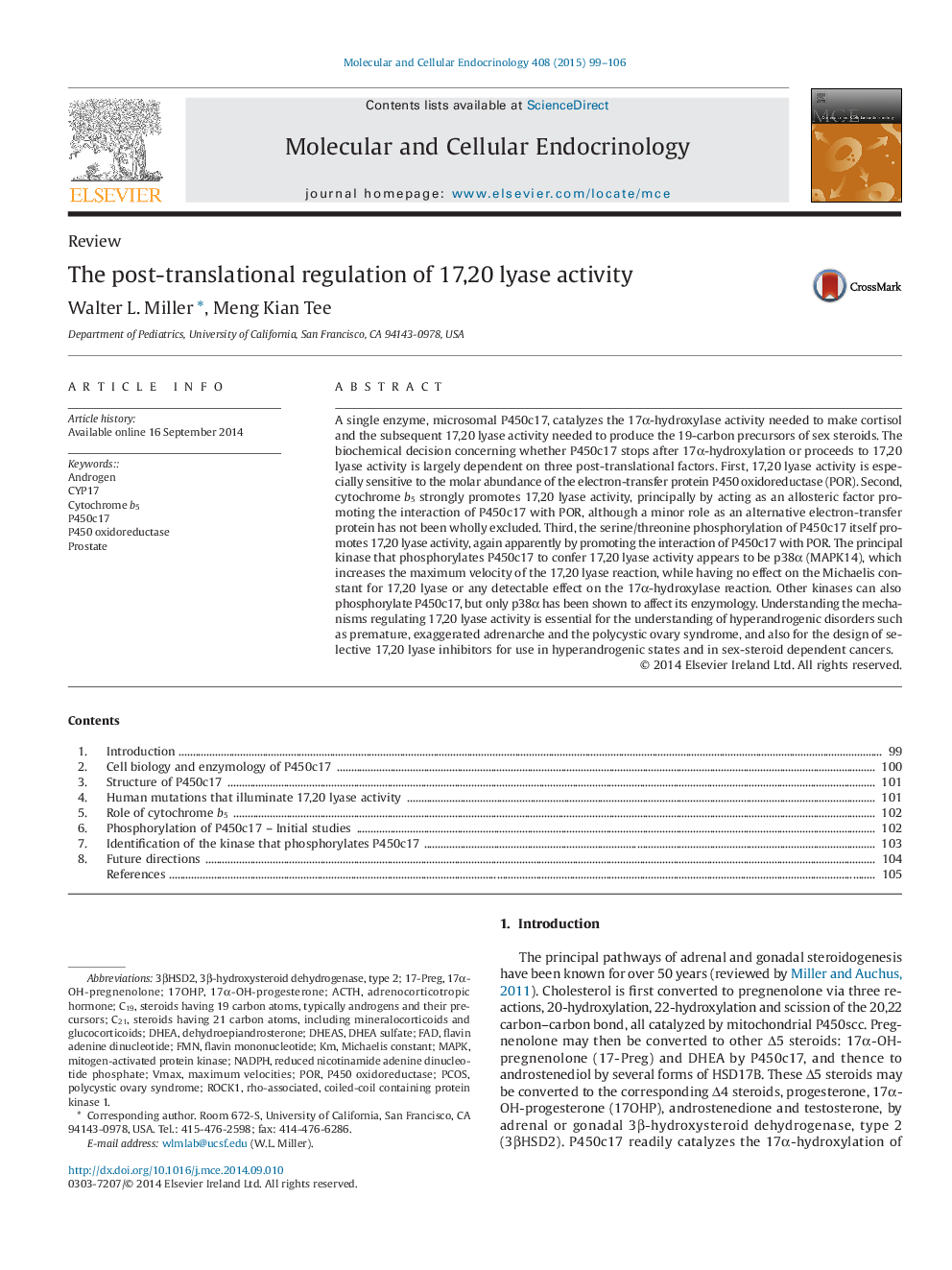| کد مقاله | کد نشریه | سال انتشار | مقاله انگلیسی | نسخه تمام متن |
|---|---|---|---|---|
| 2195820 | 1550870 | 2015 | 8 صفحه PDF | دانلود رایگان |
• Steroid 17α-hydroxylase and 17,20 lyase are mediated by microsomal P450c17.
• Lyase activity is determined by interactions with P450 oxidoreductase (POR).
• Increased POR abundance and allosteric action of cytochrome b5 promote 17,20 lyase.
• Specific serine/threonine phosphorylation of P450c17 favors 17,20 lyase activity.
• MAPK14 (p38α) phosphorylates P450c17 in vitro, augmenting lyase activity.
A single enzyme, microsomal P450c17, catalyzes the 17α-hydroxylase activity needed to make cortisol and the subsequent 17,20 lyase activity needed to produce the 19-carbon precursors of sex steroids. The biochemical decision concerning whether P450c17 stops after 17α-hydroxylation or proceeds to 17,20 lyase activity is largely dependent on three post-translational factors. First, 17,20 lyase activity is especially sensitive to the molar abundance of the electron-transfer protein P450 oxidoreductase (POR). Second, cytochrome b5 strongly promotes 17,20 lyase activity, principally by acting as an allosteric factor promoting the interaction of P450c17 with POR, although a minor role as an alternative electron-transfer protein has not been wholly excluded. Third, the serine/threonine phosphorylation of P450c17 itself promotes 17,20 lyase activity, again apparently by promoting the interaction of P450c17 with POR. The principal kinase that phosphorylates P450c17 to confer 17,20 lyase activity appears to be p38α (MAPK14), which increases the maximum velocity of the 17,20 lyase reaction, while having no effect on the Michaelis constant for 17,20 lyase or any detectable effect on the 17α-hydroxylase reaction. Other kinases can also phosphorylate P450c17, but only p38α has been shown to affect its enzymology. Understanding the mechanisms regulating 17,20 lyase activity is essential for the understanding of hyperandrogenic disorders such as premature, exaggerated adrenarche and the polycystic ovary syndrome, and also for the design of selective 17,20 lyase inhibitors for use in hyperandrogenic states and in sex-steroid dependent cancers.
Journal: Molecular and Cellular Endocrinology - Volume 408, 15 June 2015, Pages 99–106
